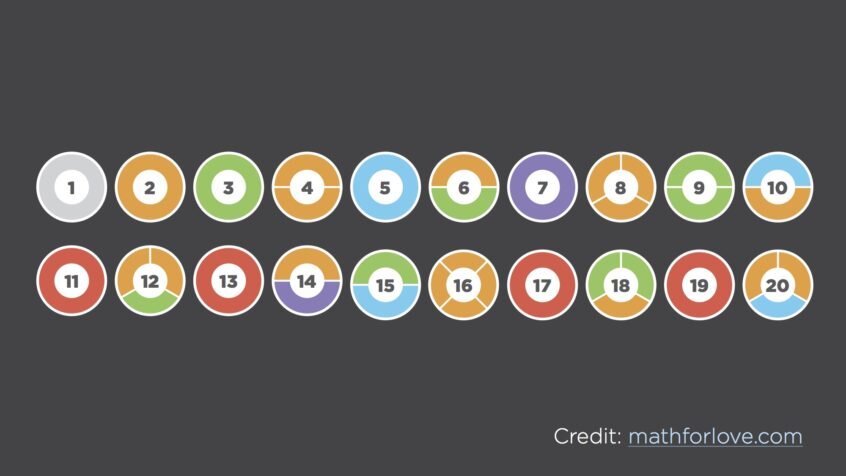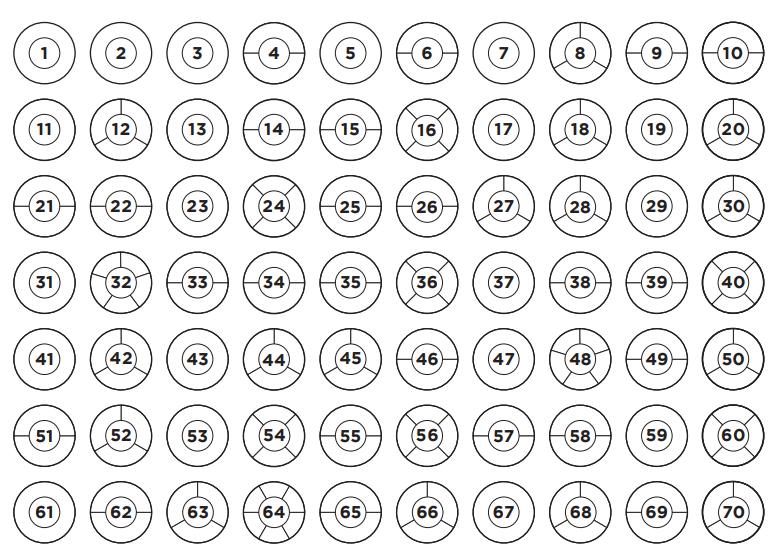Prime Climb - Plus a Free Activity!
Players: 2-4
Ages: 8 and up
Purchase: Buy on Amazon - affiliate link
Math Ideas: Operations, prime and composite numbers
Questions to Ask:
What ways can you use the dice you just rolled?
What numbers multiply to 24? How can you use the color scheme to check?
Why might it be better to move backward than to move forward?
Welcome back! Hope you enjoyed the weekend. I made a vegetable garden with my kids and tried to read as little news as possible.
This week is Math for Love week here at the newsletter, and man do I have some great stuff to share.
Math for Love is the brainchild of Dan Finkel, where he develops math games, shares lesson plans, and creates fantastic logic puzzles. I'll be sharing some of each category this week, starting with the game that first drew my interest:
Prime Climb
How to Play Prime Climb
I've written about Prime Climb in the past, and you can check out my full write-up on my blog (which, by the way, has copies of 100+ game reviews if you're stuck at home and looking for something fun to do!)
Essentially, you move pawns along the board, trying to get to space 101. They way you move is to roll a pair of special dice and then add, subtract, multiply, or divide those numbers with the number on the space where your pawn sits. So if you are on space 20 and roll a 5 and a 3, you could do 20 + 5 and then 25*3 to end up on space 75, or 20*5 and then 100 - 3 to get to 97.
The game is a wonderful way to think creatively about arithmetic, and it's perfect for any kid in 4th grade and up. My middle schooler students loved when they got to play!
But buried in the game is a wonderful insight that you and your kids can explore with a free activity...
Why is it called Prime Climb?
Dan did a great TED Talk a few years back where he shared some truly excellent advice for people who want their kids to love math. I actually think it's a great thing for any parent to watch. You might feel better about homeschooling afterward!
In the talk he showed this image:
What do you notice about the color scheme? What do you wonder? And crucially, how might you color the next row of numbers?
These questions get to the heart of the game, and explain why it's called Prime Climb. Each number is colored according to its prime factor. So 2 is orange, and every even number will also contain at least one orange section. Three is green, so every multiple of three is green. And then a number like 18 has two green sections and an orange section since 3*3*2 = 18.
Here's where the real fun starts: Dan made a blank sheet with a chart for every number from 1 to 100. You can print out copies for your kids and get them to choose their own colors for each prime factor!
In the actual game, Dan colored all the prime factors over 10 with red, but you don't have to be that constrained. You can make 11s be yellow polka dots and 13s be pink squiggles. Have fun with it!
Although Prime Climb is for older kids, there's no reason why a 1st grader can't color in the sheet. Just tell them to skip-count by 2s and color a section with the 2 color. Do the same for the 3s, 5s, and 7s, and you'll have colored in a lot. Then you and your kids can discuss how to color in all the pieces that are still unfilled.
Your child will be interacting with a deep math idea: every number has its own distinct coloring pattern. It's impossible for two different numbers to be colored in the same way. In fact, this idea is so important that it's called The Fundamental Theorem of Arithmetic. Sounds pretty fancy, huh? Who knew you could discover it with a board game and some colored pencils?
If your child starts to see the formula that makes up each number (which we mathy folks call the prime factorization) then they might have an easier time when it comes to, say, simplifying fractions. Can 12/15 be simplified? Of course, both those numbers have a green section, which means we can divide them both by 3!
Being able to quickly find the prime factors of a number is like an arithmetic superpower - the kids who do it can unlock so many other ideas as a result. So print out the worksheet and color away!





